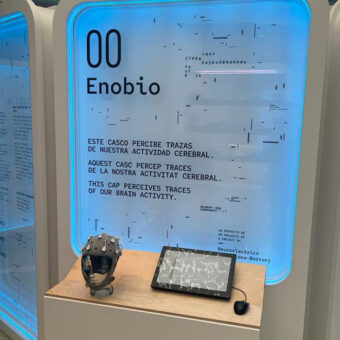According to the Oxford Dictionary, meditation can be defined as “To focus one’s mind for a period of time, in silence or with the aid of chanting, for religious or spiritual purposes or as a method of relaxation”. In this blog post, I would like to ask if it is possible that in the near future we can add to the above definition a clinical practice side to improve patients’ lives.
Unfortunately I do not practice yoga or other sorts of meditation, but – I guess that like you – I know many people practicing it and talking about how beneficial it is for body and mind. My key questions for a meditation practitioner would be: could you explain what do you experience after it? What are the benefits? How do you know objectively if you did better in one session than another?
Meditation and Neuroscience
Some of the above questions have been scientifically studied by Neuroscience researchers. I recently came back from the SfN congress in New Orleans 2012 (by the way, it was great!) and it was back in 2006 when Dalai Lama was invited to the conference (with a certain degree of controversy) linking EEG and Meditation in a most visible way.
The Dalai Lama was interested in the work performed by Davidson and Antoine Lutz. They positioned 128 EEG electrodes on the head of a monk in Kathmandu and recorded their EEG signals for more than of 10,000 hours of meditation. Lutz asked the monk to meditate on “unconditional loving-kindness and compassion”, and this caused powerful EEG gamma activity – usually weak and difficult to see. Moreover, oscillations from various parts of the cortex were synchronized – a phenomenon that sometimes occurs in patients under anaesthesia. They brought in more monks and a control group of inexperienced meditators and came to the conclusion that monks‘ gamma waves were 30 times stronger that the students. In addition, larger areas of the meditators’ brains were active, particularly in the left prefrontal cortex, the part of the brain responsible for positive emotions.
The work performed by Davidson et al. opened a new research path, and highlighted the possibility to change brain function through training. This finding could open the door to new medical applications. If compassion meditation can generate a specific pattern in EEG waves and if this can be related to a specific state of mind and wellbeing, maybe meditation training could be used to generate that state it in the context of non-desirable emotional responses. That is, if meditation can enhance the brain’s ability to produce “attention and affective processes” – emotions, in the technical language of the study – it might also be used to modify maladaptive emotional responses like depression.
Meditation and Pain
Since Davidson and team published their paper in 2008 many other groups around the globe have been researching the impact of Meditation on the human brain with special focus on medical applications, pain management being one of them.
In April 2011 a study published by MIT and Harvard groups found that people trained to meditate over an eight-week period were able to control their EEG signals, specifically alpha rhythms. Alpha waves are typically linked to attention and thus help suppress irrelevant or distracting sensory information. By learning to maintain and control their attention on specific areas of the body and also shifting it by one area to the other, subjects were able to reduce their perceived level of pain.
There are several other studies demonstrating that chronic pain patients can benefit from meditation. Joshua A.Grant and Pierre Rainvile at Université de Montreal took a step forward and looked at pain processing in healthy trained meditators, trying to find out responses on how meditation may affect pain perception. Their study involved 13 Zen expert meditators compared with 13 non-meditators, all undergoing a pain test (produced by a thermal source inducting heat levels from 43-53 Celsius degrees).
Results showed that Zen meditators have much lower pain sensitivity- an 18% reduction on pain intensity (even without meditating) when compared to control group, partly due to slower breathing. This study suggests that meditation could be used in the clinical setting, altering pain perception and thus reducing the amount of pain medication required.
In another pioneering work, C. Coghill et al tried in their study to better understand how meditation influences sensory experience, this time with fMRI to assess the neural mechanisms by which mindfulness meditation influences pain in healthy human participants. After 4 days of mindfulness meditation training, meditating in the presence of noxious stimulation significantly reduced pain unpleasantness by 57% and pain intensity ratings by 40% when compared to rest.
Towards clinical applications of Meditation
Moreover, meditation is being used for all age groups with diverse clinical conditions. At Memorial Sloan Kettering Cancer Center, scientists Mahiuddin Ahmed and Sonia Sequeira are interested in developing a meditation intervention that can benefit pediatric cancer patients undergoing painful procedures during their treatment. They are also beginning to explore the neural correlates (EEG patterns) of these practices to better understand the mechanism.
A recent article from the NYTimes is also pointing at very interesting direction to which Mediation will head to. Imagine if we can link it to something like Alzheimer?
Hopefully in the near future the definition of Meditation will include its clinical application to improve patient´s life and help to address healthcare challenges. I hope to have convinced you that this is without a doubt a new line of work that may help patients in different pathologies, and one in which more and more evidence is being collected. If you want to learn more be sure to follow the next conference in Meditation and Neuroscience in January 2013 in New York.
photo credit: Alex E. Proimos via photopin cc
photo credit: Ian Sane via photopin cc




